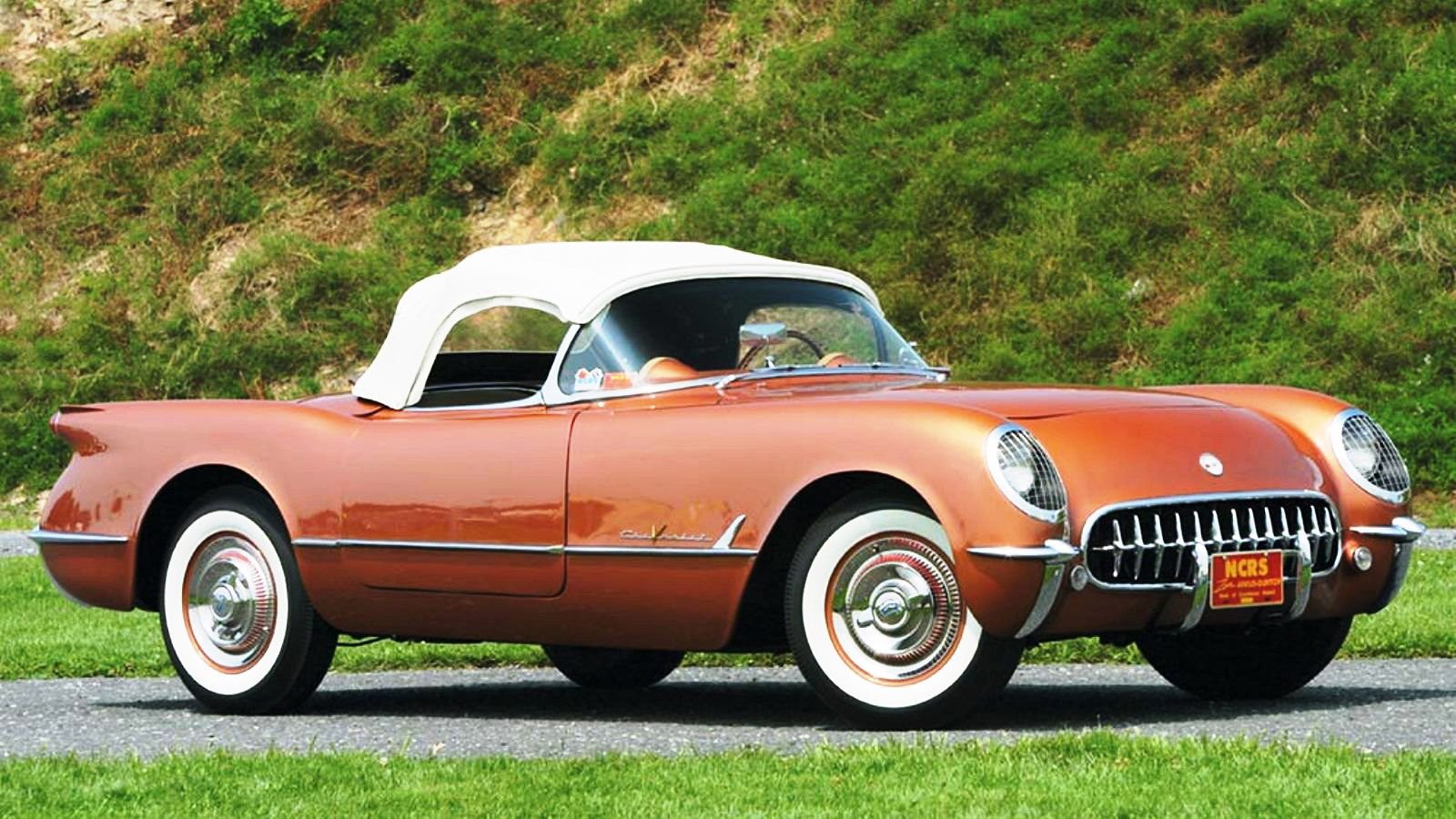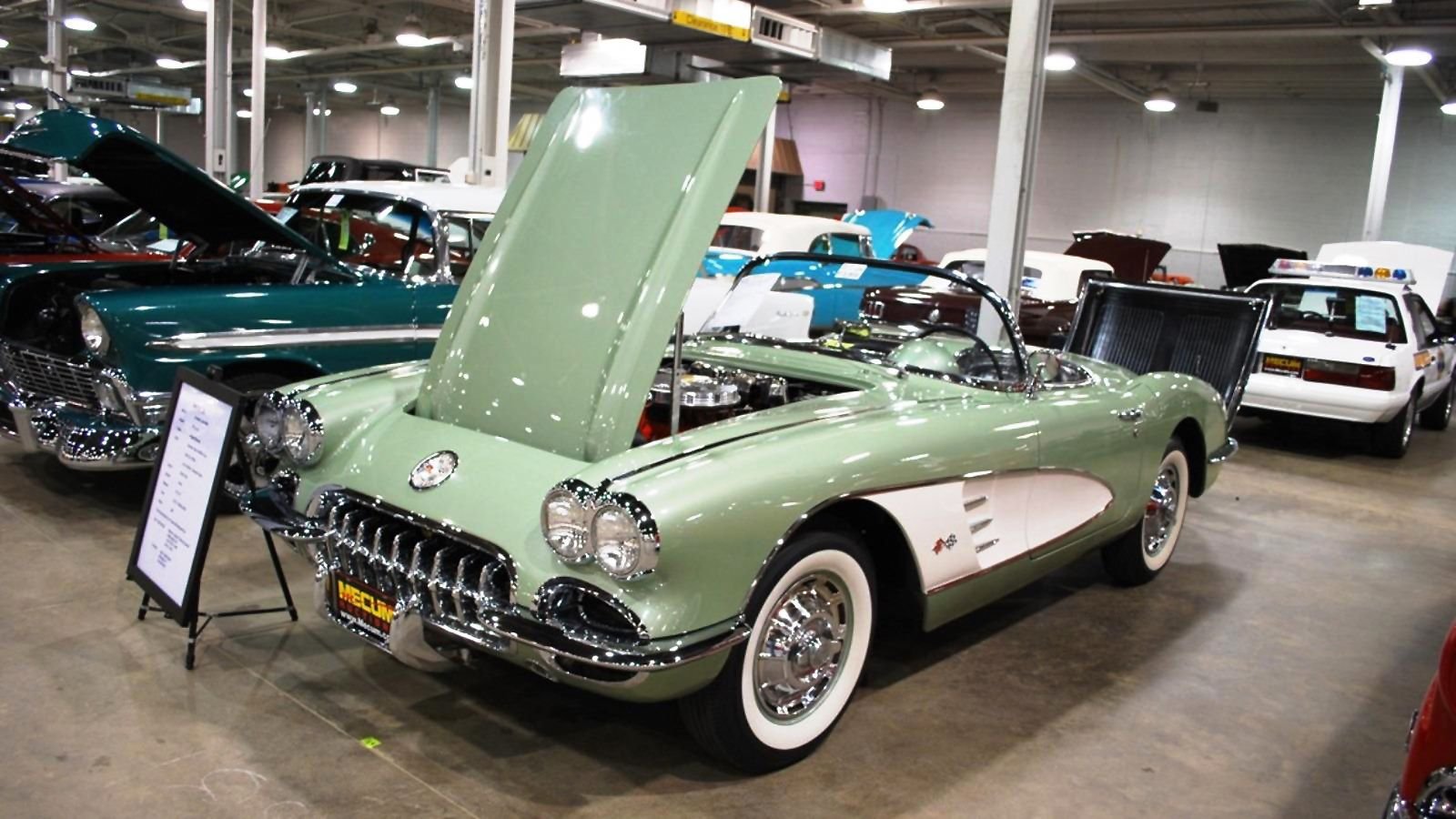10 Rarely Seen Early Corvette Colors
It is generally though that most Corvettes are red, the lone exception being 1953 Corvettes, which we all know were only offered in white. Other colors are available of course, and some over the years have been extremely striking. A Corvette always sets you apart from the crowd on the road or at the mall parking lot, but these colors will even set you apart when you get together with your Corvette owning buddies at a Corvette-only car meet.




















1. 1954-55 Chevy Corvette Pennant Blue
Starting with the early cars first, some sources report that only a few hundred rolled off the line with this medium blue color, applied to them in 1954 and part of 1955. Sales of the early C1 ‘Vette were so small that all of the cars are rare, but the blue ones are widely considered the rarest. Reports are that four cars were actually made and painted black, and another 100 were painted red, but the blue cars were special in that they had a unique beige color interior that the other cars did not get. It is extremely hard to prove a red or black 1954 Corvette isn’t a resprayed white car, but with a Pennant Blue car and its beige interior, there is no doubt.
>>Join the conversation about Rare Early Corvette Colors right here in the Corvette Forum!
2. 1955 Chevy Corvette Copper
For many of these cars, it is hard to get an official number because GM did not keep that great of records and it is only later that enthusiasts and the folks at Bowling Green pieced together many of these statistics. A copper paint color, aptly named “Corvette Copper” was initially offered midway through 1955 and reportedly only applied to a dozen cars, then renamed Aztec Copper for 1956 and 1957. Some will argue that they are a different color, but DuPont uses the same code for both.
>>Join the conversation about Rare Early Corvette Colors right here in the Corvette Forum!
3. 1956-57 Chevy Corvette Inca Silver Metallic
In 1957 Chevy was still painting the Corvette with nitrocellulose lacquer, except for the new Inca Silver Metallic paint which was the more modern acrylic lacquer. Less than 100 Inca Silver cars were made that first year, and the next only saw about 200 produced, as all the colors moved to the new acrylic formulations. Just 36 Inca Silver cars were made in 1958 with contrasting black painted covers, and about 10 silver with white coves in 1956, which are so rare you can barely find a picture on the Internet.
>>Join the conversation about Rare Early Corvette Colors right here in the Corvette Forum!
4. 1956-57 Chevy Corvette Cascade Green
A few hundred of this turquoise/aqua green ‘Vette were made in 1956, and about 500 more in 1957. There are almost no more 1950s looking color ever offered on a Corvette than this blue/green paint. Green has never been a popular color for Corvettes, though through the years you could get them in many different shades of it, and a green ‘Vette of any vintage is rare.
>>Join the conversation about Rare Early Corvette Colors right here in the Corvette Forum!
5. 1960 Chevy Corvette Cascade Green
Cascade Green came back in 1960 for an encore but as a totally different mint green metallic. It is estimated that less than 150 cars got painted this color, with about half of them having contrasting white applied to the covers. This minty metallic is very much a 1960s color, similar to what you saw on many Bel Airs and Biscaynes, but looking much sportier on a ‘Vette.
>>Join the conversation about Rare Early Corvette Colors right here in the Corvette Forum!
6. 1960-62 Chevy Corvette Honduras Maroon
If you like your Corvette red, but want it to be a rarer red, try the 3-year run of Honduras Maroon. This color is red enough for any American sports car enthusiast, but a much more blood red than the typical bright red Corvette color. Add in some contrasting coves in an Almond Beige and you’ve got a classy combo you aren’t likely to see again soon.
>>Join the conversation about Rare Early Corvette Colors right here in the Corvette Forum!
7. 1961 Chevy Corvette Jewel Blue
Another very common 1960s color is this metallic light blue, but it is very rare to find it on a Corvette, with less than 800 having been made in 1961. This color blue was only offered in 1961. When the C2 Corvettes came along, a silver blue paint was offered and was much more popular.
>>Join the conversation about Rare Early Corvette Colors right here in the Corvette Forum!
8. 1963 Chevy Corvette Saddle Tan Metallic
On a lesser car, this color would just be a dark beige but on the split-window C2 ‘Vette is elevated to a high class muted gold. The previous year was a similar but lighter color, known as Fawn Beige Metallic, which is also rare, but not as rich looking. If you are looking for a color that will set a split-window coupe apart, this is as good as gold.
>>Join the conversation about Rare Early Corvette Colors right here in the Corvette Forum!
9. 1965 Chevy Corvette Glen Green Metallic
This dark green Corvette color is the first time the factory offered the American sports car in anything close to the popular British Racing Green. Later, in the C3 generation, a similar color would be offered called simply Blue-Green.
>>Join the conversation about Rare Early Corvette Colors right here in the Corvette Forum!
10. 1966 Chevy Corvette Mosport Metallic
This C2 ‘Vette green was another one-year-only color and is similar in hue to the later version of Cascade Green. Green is probably the second least popular color for a Corvette over the entire history of the car, no matter the shade or year.
>>Join the conversation about Rare Early Corvette Colors right here in the Corvette Forum!
For help with service and maintenance of your Corvette, check out the how-to section of CorvetteForum.com
